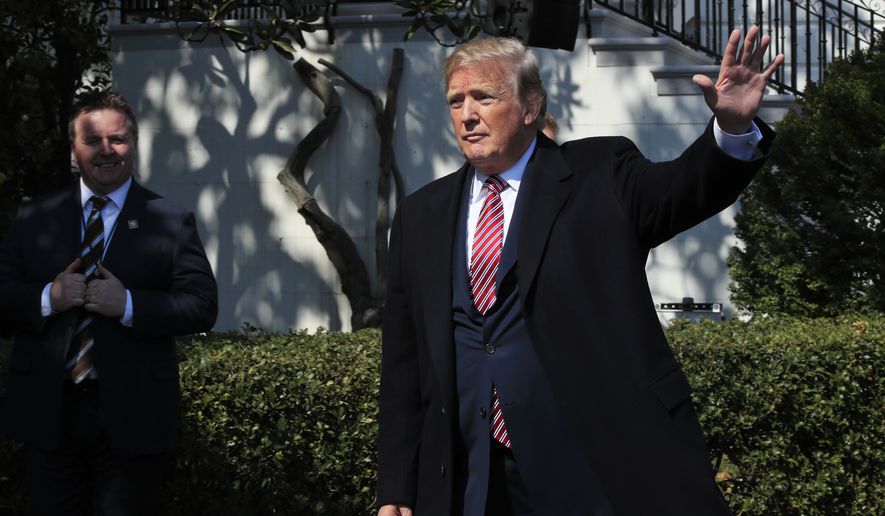President Trump signed an executive order Tuesday for a government-wide review of welfare programs, with a goal of putting more people back to work, White House officials said.
The order directs all federal agencies involved in providing more than $700 billion in low-income assistance annually to study programs that are “failing Americans,” and to report back in 90 days with recommendations, said White House domestic policy council director Andrew Bremberg.
“Our country still struggles from nearly record-high welfare enrollments,” Mr. Bremberg said in a conference call with reporters. “President Trump endorses reforms that ensure those in need receive assistance, while eliminating the economic stagnation that has resulted from long-term government dependence.”
The executive order states that federal policy will be to reform welfare programs to empower people following “principles of economic mobility.” Those principles include:
- Improving employment outcomes and economic independence, including by strengthening existing work requirements and introducing new ones.
- Promoting “strong social networks” to escape poverty, “including through work and marriage.”
- Addressing populations that “may particularly struggle to find and maintain employment (including single parents, formerly incarcerated individuals, the homeless, substance abusers, individuals with disabilities, and disconnected youth).”
- Reducing wasteful spending by consolidating or eliminating federal programs that are duplicative or ineffective.
The review will encourage tougher work requirements for programs such as Medicaid, food stamps and subsidized housing, officials said.
Mr. Trump’s order states that many well-meaning welfare program “have instead delayed economic independence, perpetuated poverty, and weakened family bonds.”
“While bipartisan welfare reform enacted in 1996 was a step toward eliminating the economic stagnation and social harm that can result from long-term government dependence, the welfare system still traps many recipients, especially children, in poverty and is in need of further reform and modernization in order to increase self-sufficiency, well-being, and economic mobility,” the order states.
Despite the strong economy, administration officials said enrollment in welfare programs remains high. The White House said in 2016, more than 16 million “able-bodied adults” were enrolled in the Supplemental Nutrition Assistance Program, or food stamps.
In January 2018, more than 74 million Americans were enrolled in Medicaid and the Children’s Health Insurance Program, a 29-percent increase over the 2013 baseline period, the White House said.
There are also a record 28 million able-bodied adults on Medicaid. The White House said that number has quadrupled since 2000.
Senior administration officials noted that unemployment is at historic lows, and U.S. employers are seeking to fill about 6 million vacant positions.
House Speaker Paul D. Ryan, Wisconsin Republican, said the president’s effort to alleviate poverty “starts by developing our workforce.”
“This is one of the best economic environments we’ve seen in years, yet businesses are having a hard time finding qualified workers,” Mr. Ryan said. “Combining work requirements with work supports is an effective strategy for helping Americans move from welfare into the labor force, as proven by states like Kansas and Maine.”
He said the government also needs to ensure that it is “measuring — and responding to — the effectiveness of programs so they best serve those they were designed for.”
• Dave Boyer can be reached at dboyer@washingtontimes.com.




Please read our comment policy before commenting.